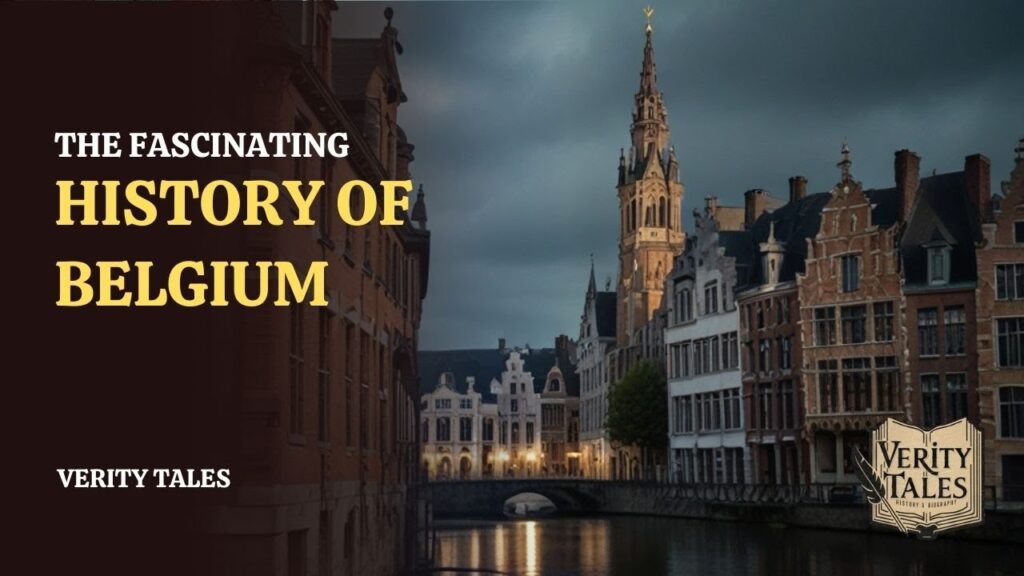Many portions of Belgium were marshlands and waterways where the Senne, Dijle, Demer, and Leie rivers flowed, as well as the Scheldt. Wild animals dwell in the thick Ardennes forests in the southeast.
It was inhabited from 150,000 B.C. Even though the Man of Spy, Magdalenians, Neolithics, and Michelsberg people left cave drawings, tombs, and flint mines, it was the Celts, the Belgae, who made it into written history.
They erected many fortified villages, oppida. Kemmelberg was a West Flemish Celtic community. The Celtic ard (high) of the Ardennes is one of numerous modern Belgian place names originating from Belgae, a language allied to Irish and Welsh. Germen settled in Belgium alongside the numerically greater Celts when they went westward. It was before the Romans.
Caesar was astonished by the Belgae’s stubbornness, which took seven wars to subdue. Gallia Belgica, or Belgica Secunda, became a Roman province in 15 BC. The Grand Duchy of Luxembourg, Lorraine in France, and Trier in Germany were originally part of Belgica Prima.
After their invasion in 57 BC, Belgium was seized by the Romans and became part of their empire under the name Gallia Belgica. However, in the 5th century AD, the Franks took control of Belgium following the collapse of Roman authority, with Tournai serving as their initial capital. Dominating Western Europe in the ninth century, the Franks eventually saw their power wane.
Then in the eleventh century Flanders became a strong semi-independent state, rising to importance and wealth. With commercial alliances with England, France, Germany, and Spain and raw materials imported from England, Belgium’s wool business boomed in the 12th and 13th centuries. Flemish cities like Ypres, Ghent, and Bruges prospered.
Despite their prosperity, the influential towns of Belgium often clashed with the French monarchs. These battles resulted from commerce and loyalty issues as well as the French want to include Belgium into their monarchy.
When the Bruges’ artists protested against a new tax imposed by the French, tensions peaked in 1302. Led by Pieter De Coninck and Jan Breydel, the insurrection culminated in the Battle of the Golden Spurs on July 11, 1302, when Belgian craftsmen and peasants overcame the French army, ensuring Flanders’ freedom.
In the fourteenth century, Burgundy grew as a strong force, and Flanders became part of its territory via the marriage of Margaret of Flanders to the Duke of Burgundy. Despite this annexation, trade prospered, and the area enjoyed a blooming of creative success with artists like Jan Van Eyck and Hans Memling.
In 1477, by the marriage of Mary, the heiress of the Duke of Burgundy, to Maximilian of Austria, Belgium’s jurisdiction stretched to Austria. The subsequent inheriting of the Spanish and Belgian thrones by Charles I in 1566 led to the annexation of Belgium by Spain, marking another momentous change in the region’s sovereignty.
In the 16th century, despite the upheaval of the Protestant Reformation spreading over Europe, the majority of Belgians remained strong in their commitment to Catholicism. As the century came to a conclusion, numerous European countries vied for control over Belgium, finally concluding in the transfer of sovereignty to Austria during the War of the Spanish Succession in 1714.
However, Belgium’s destiny took a different turn when French soldiers attacked and conquered the province in 1794, finally annexing it in 1795. The French Revolution brought about substantial changes, notably the implementation of required military service in 1797, which prompted a revolt in 1798. Despite the insurrection, the French retained their dominance over Belgium.
Beginning in the early 1800s, Belgium’s industrialization path was defined by an explosion in metal industries, textile manufacture, and coal mining. But Napoleon’s loss at Waterloo in 1815 resulted in a reddening of Europe’s map combining Belgium and the old Netherlands into one country. Notwithstanding this union, cultural and economic differences between Belgium and Holland proved insurmountable, which resulted in Belgian independence during a revolution in 1830.
Rising to the Belgian throne in 1831, King Leopold of Saxe-Coburg presided over until 1865 amid mounting Flemings and Walloon conflict in the modern age. Though internal strife, industrialization kept growing. Though his rule was tarnished by crimes that resulted in his resignation in 1908, Leopold II succeeded him, governing from 1865 to 1909 and supervising the purchase of the Belgian Congo in 1885.
During the two world wars, Belgium had great difficulties; German invasions in both 1914 and 1940 caused extensive suffering. After World War II, the nation recovered quickly and became one of the founding members of the European Union in 1957; Brussels hosted its headquarters. With the arrival of television in 1953, the latter half of the 20th century was defined by economic wealth and cultural developments.
Belgium is prosperous today; Sophie Wilmes is made history as the first female prime minister in 2019. Belgium, with 11.5 million people in 2024, is still rather important on European scene.
More resources:
Watch Our Video: YouTube Video on History of Belgium
Get Our Book: Amazon book

